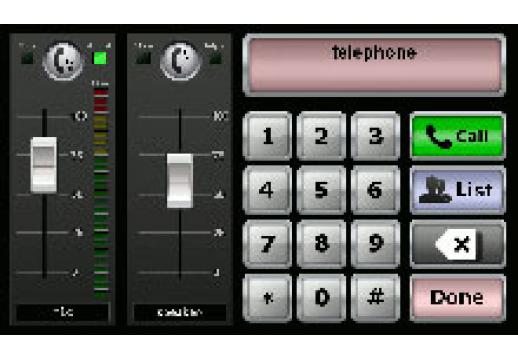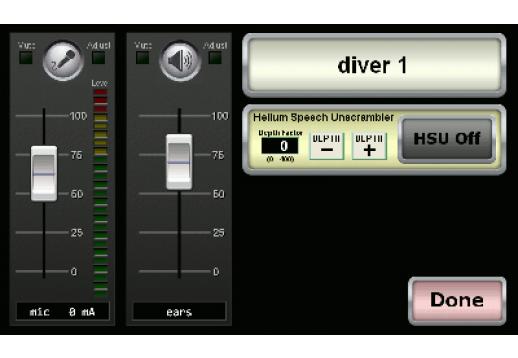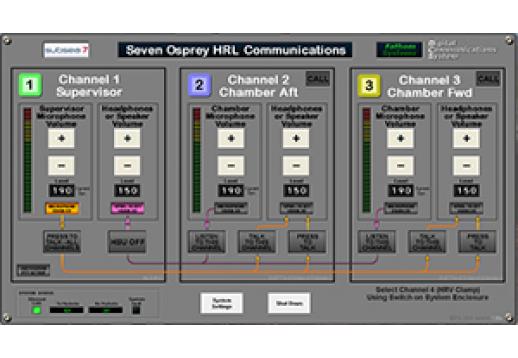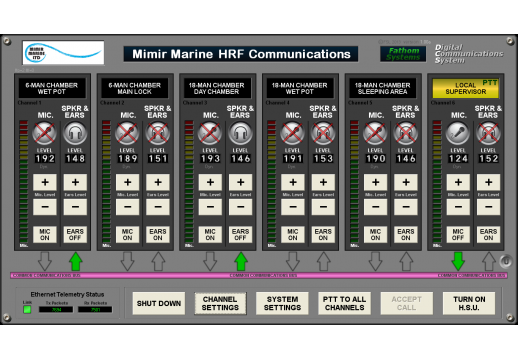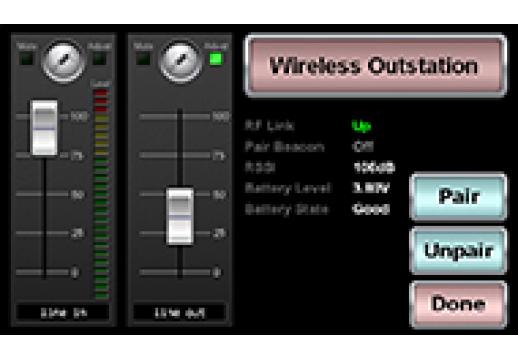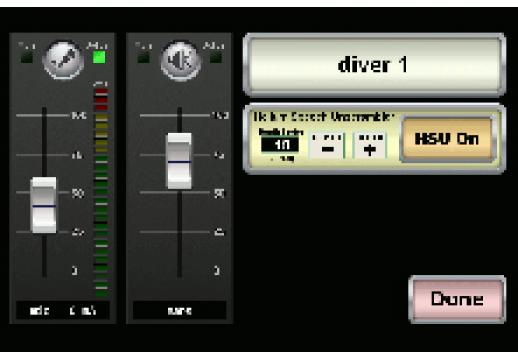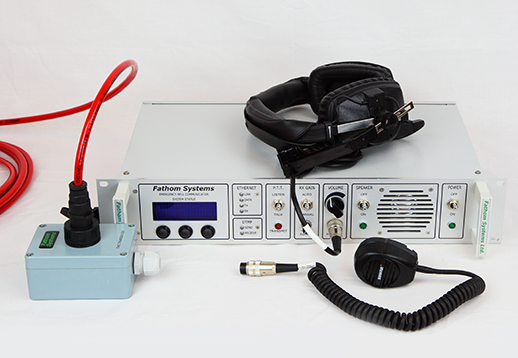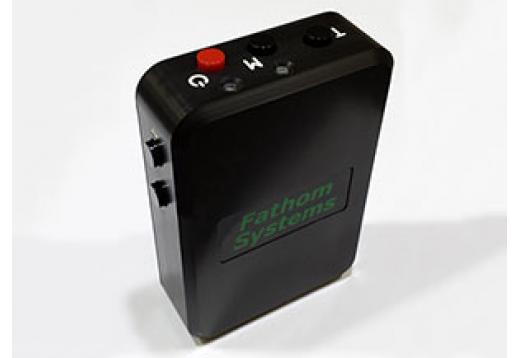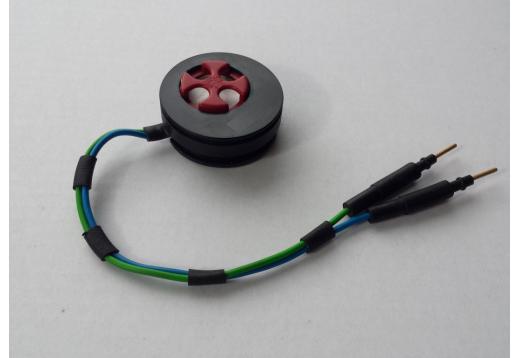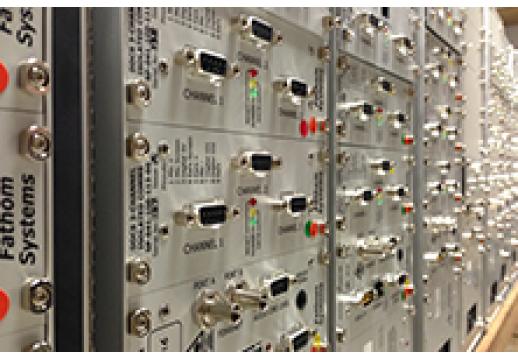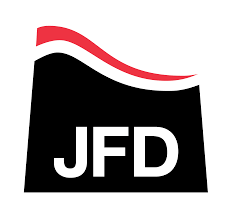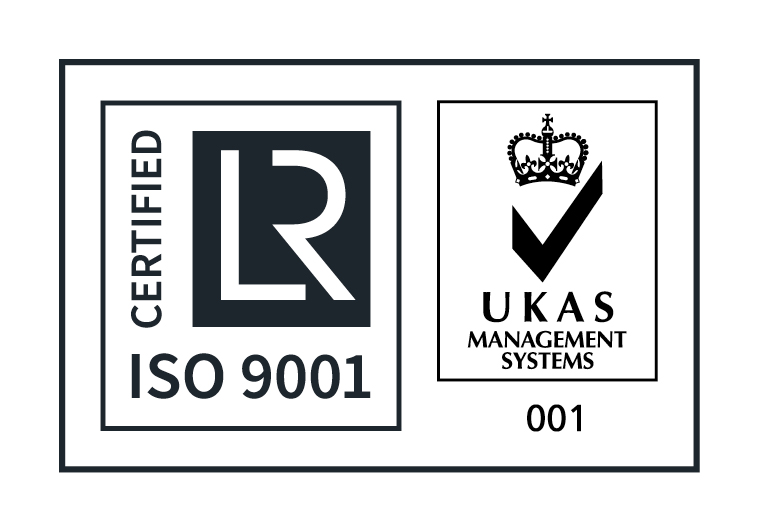Diver Communications
Fathom Systems have recently developed a new generation of Digital Diver Communications System (DDCS) products that offer state of the art digital signal processing and routing. This system provides a modular scaleable system that can be configured to meet any required configuration.

Click here to read the DDCS datasheet.
READ MORE
The system has been developed in response to a market need for modern, reliable, high quality systems which offer flexibility and advanced features. Some of the key features and benefits are:
- Unrivalled audio performance;
- Fully digital audio processing (volume controls and channel mixing / routing);
- High quality (Studio quality) audio CODECs and low-noise analogue signal paths;
- Fully isolated and safety compliant diver interfaces;
- Wireless operation for supervisors using proprietary 2.4GHz digital technology;
- Advanced helium speech unscrambler, configurable on multiple channels;
- Ergonomic user control panel using touch-screen technology and software configurable settings;
- Scaleable architecture providing flexibility and cost efficient installations;
- Small footprint shallow mounting depth ergonomic control panels;
- Digital fibre-optic network linking multiple units on the vessel together, allowing any channel to be accessible from any communications unit;
- Automatic duty/standby redundant operation for mission critical applications;
- Supervisor login with the facility to store preferred system settings;
- Telephone interface allowing divers to dial internal or external numbers from within chambers and to speak to others in an unscrambled voice.
The DDCS is a high end voice communications system for use in commercial diving applications. It is essentially a sophisticated intercom system allowing a variety of ‘Users’ to communicate with one another – either directly on a one-to-one basis or as a group of three or more.
The system is scaleable which means that it can be configured for a wide range of applications ranging from a simple 3-channel stand-alone comms system up to a complex multi-channel system spread over a number of separate interconnected units.
Where the system differs from conventional marine or industrial intercom communications system is that it is designed and optimised for use with long cables (umbilicals) linking to diving helmets and remote outstations and it uses isolated interfaces that provide safety compliance and high quality, low-noise performance. The system also incorporates a helium speech unscrambler for use with heliox mixed-gas diving applications.
Operation of the DDCS generally requires a single ‘Master’ User who is responsible for adjusting the comms system controls. The Master User has one or more comms units under their control which link to the various Remote Users or devices.
The remote devices can be a diver’s helmet, an ‘outstation’ in a chamber, SDC (Bell) or control room, a 2.4GHz wireless repeater module etc. As the system provides full-duplex operation (i.e. you can talk and listen at the same time, similar to using a telephone), each Remote User channel requires two screened twisted pairs to be installed to connect the remote location to the main comms unit.
The ‘Master’ User is typically a Dive Supervisor (for diving bell or surface-supplied Dive control installation) or a LSS/LST for SAT Control chamber comms applications. The remote users can be in-water divers, divers in the chambers or any other personnel located at a remote outstation (e.g. on-deck personnel, crane operators etc.).
The DDCS is based around a 3U 19” rack chassis (the System Chassis), into which are plugged a number of modules, each enclosed in a fully screened and protected housing. The System Chassis can be mounted in any suitable rack location, and does not need to be located at the Master User’s control panel (as is the case with existing Diver comms system equipment). The System Chassis is populated with the appropriate number and type of modules to provide sufficient channels to satisfy the operational requirements, and is controlled by a dedicated Operator Control Panel (OCP) unit. The OCP can be mounted local to the System Chassis or remotely on a separate User’s control stand.
Each System Chassis has its own dedicated Operator Control Panel which includes the following features:
- 3U form factor mounting chassis (140mm deep)
- 8.4” touch-screen display & control processor
- Integrated audio amplifier, loudspeaker, headset, front-panel microphone interfaces
- Interface to an external 2.4GHz wireless base-station that links to a wireless belt-pack
- Routing & Bus control selection switches
- Data wheel and navigation buttons
For each OCP, a wireless belt-pack transceiver module is available. The wireless belt-pack module provides high-quality wireless audio communications for the Master User to avoid the requirement for trailing leads from the OCP to the User’s headset.
The belt-packs are rechargeable and include configurable press to talk (PTT) buttons. Either a combined headset/microphone or separate lavalier microphone and headphones can be used with the belt-pack.
The system is type-tested in accordance with the requirements of DNV OS-D202 and OS-E402, ensuring compliance for EMC, shock, vibration, temperature and humidity.
The system can also be qualified for use in geographical areas where intelligibility testing is a requirement (e.g. Norway under the NORSOK regulations), and this testing has been carried out successfully on a number of installed systems.
When complex systems are required, it is advantageous to link a number of DDCS comms units together to form a communications ‘network’. This facility is provided via the optional fibre-optic connected ‘Fibrenet’ link, which uses a dual redundant fibre-optic ‘ring’ to connect all DDCS units together using singlemode fibres. In cases where such a network is set up, any Remote User channel on any DDCS unit is available to both the local DDCS unit and any other DDCS unit on the network.

